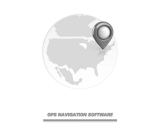
3.1.7 Selecting a location on the map ............................................................................................ 37
3.1.8 Planning a Multipoint Route ................................................................................................. 38
3.2 Checking Route Information and Alternatives ................................................................ 39
3.3 Checking Traffic Events .................................................................................................. 40
3.4 Editing the route ............................................................................................................. 42
3.4.1 Setting a new starting point................................................................................................... 42
3.4.2 Adding an additional destination .......................................................................................... 43
3.4.3 Modifying the list of destinations ......................................................................................... 44
3.4.4 Saving the planned route ....................................................................................................... 45
3.4.5 Deleting the planned route .................................................................................................... 45
3.4.6 Selecting a route alternative when planning the route .......................................................... 46
3.4.7 Selecting a route alternative for an existing route ................................................................. 47
3.5 Saving a location ............................................................................................................. 48
3.5.1 Editing a Saved Location ...................................................................................................... 49
3.6 Adding an Alert Point ..................................................................................................... 49
3.7 Running a Simulation ...................................................................................................... 50
3.8 Off-road navigation......................................................................................................... 51
3.8.1 Switching to off-road navigation .......................................................................................... 52
3.8.2 Selecting the destination in off-road mode ........................................................................... 52
3.8.3 Navigating in off-road mode ................................................................................................. 52
3.9 Updating the navigation software and the maps ............................................................. 53
4 Reference guide ....................................................................................................... 55
4.1 Concepts .......................................................................................................................... 55
4.1.1 2D/3D GPS reception ........................................................................................................... 55
4.1.2 Natural and TTS voices ........................................................................................................ 55
4.1.3 Road safety cameras and other proximity Alert Points ......................................................... 55
4.1.4 Route calculation and recalculation ...................................................................................... 56
4.1.5 Smart Zoom .......................................................................................................................... 57
4.1.6 Speed limit warning .............................................................................................................. 57
4.1.7 Historical traffic .................................................................................................................... 57
4.1.8 Real-time traffic .................................................................................................................... 58
4.1.9 Intelligent navigation ............................................................................................................ 58
4.1.9.1 Congestion detour on highways .................................................................................................... 58
4.1.9.2 Real-time alternative routes .......................................................................................................... 59
4.1.9.3 Parking around destination .......................................................................................................... 60
4.1.9.4 Hints upon detour ......................................................................................................................... 60
4.2 Information menu ............................................................................................................ 61
4.2.1 Where Am I .......................................................................................................................... 62
4.2.2 Trip Monitor ......................................................................................................................... 63
4.3 Setup menu ...................................................................................................................... 64
4.3.1 Route preferences ................................................................................................................. 65























